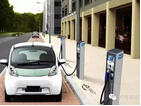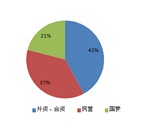In recent years, the development of new energy vehicles is on the rise. Many countries have set a timetable for banned traditional fuel vehicles, such as Germany in 2030 and Britain and France in 2040. In the important node of the replacement of new and old energy vehicles, the layout of the capital of each road is quite forward-looking. In China, where the market is huge, traditional car-making forces and cross-border capital are rushing into the new energy market, with the highest demand for electric vehicles. Statistics show that in 2017, 556,393 new energy sources were sold nationwide. Among them, the cumulative sales of pure electric vehicles for the whole year was 448,820 units, accounting for 81% of the total number of new energy vehicles. According to the absolute dominant position, it ranked first in the world.
In fact, the essence of the concept of electrification is not to turn all the cars into pure electric vehicles at once, but to first expand the application of electric energy; while the technology to expand the application of electric energy is currently in addition to pure electric technology (EV). Hybrid (HEV), external charging hybrid (PHEV), hydrogen fuel cell (FCEV) and other technologies. Why do Chinese auto companies go straight to pure electric?
According to industry insiders, new energy vehicles appear to be a high-end emerging industry, but in addition to the core technologies such as power batteries, the entry barrier is very low, even if there is no experience in building cars, you can also cooperate with traditional car companies to build cars. Relatively speaking, pure electric vehicles are relatively simpler than plug-in hybrids. It is reported that plug-in hybrid vehicles have higher requirements for vehicle integration and control, and most Chinese independent brands have accumulated less in energy management, power system decoupling, engine and automatic transmission, and have no ability to develop high. Quality plug-in hybrid powertrain.
In the case that most of the electric vehicles produced are purely electric, the sales of pure electric vehicles are well understood according to the absolute advantage, but this is only a temporary measure for most consumers.

In addition, the central and local governments' strong subsidies for new energy vehicles have made it almost impossible for new energy manufacturers to consider the market. They can make profits only by financial subsidies, and all the capitals will get together. However, cars that rely on subsidies to survive will not be competitive. After the subsidies have subsided, companies will have to face cost problems. This is why many foreign car companies are building a hybrid car.
In addition, the consideration of the environmental protection of new energy vehicles should focus on the entire industrial chain of production and use to scrap recycling and reuse, rather than simply looking at the emissions when used. The large-scale launch of pure electric vehicles can reduce carbon dioxide emissions. However, in the context of domestic thermal power generation, the pollutants generated by upstream power generation have not decreased. Only the power source that uses renewable energy to generate electricity is a veritable environmentally friendly car. Retired batteries are also a factor that must be considered. According to industry experts, after 2018, China's new energy power batteries will enter a large-scale decommissioning period. It is estimated that the total amount of decommissioning in 2020 will exceed 200,000 tons. If these batteries are not properly disposed, they will bring environmental impact and safety hazards to the society, and on the other hand, they will also waste resources.
In addition, the breakthrough of pure electric vehicle mass production battery technology also takes time, and the current limited mileage is often faced with a declining situation.
In the context of the energy transformation of the automotive industry, all walks of life have been arguing over whether fuel vehicles should be banned. Some insiders have suggested that for automotive companies, hybrid power inherits both the traditional automotive technology system and a large number of new energy technologies. In terms of technology research and development and manufacturing, it can not only maximize the application and optimization of existing industrial resources, but also form a large reserve and accumulation of electrification technologies such as batteries, motors, and electronic controls. This kind of reserve and accumulation is an indispensable step for the large-scale mass production of electric vehicles in the future and the comprehensive application of other new energy sources in the future. The practices of many countries and companies can also be seen.
It is undeniable that pure electric vehicles are the future development direction, because zero emissions are the ultimate pursuit of new energy vehicles. However, to do anything must follow the basic laws of development, the car is a capital, technology and talent-intensive industries, pure electric vehicles to succeed can not rely on a single passion. When developing new energy vehicles, why not be steady and steady, and take a more stable one.
















 RCCN WeChat QrCode
RCCN WeChat QrCode Mobile WebSite
Mobile WebSite







